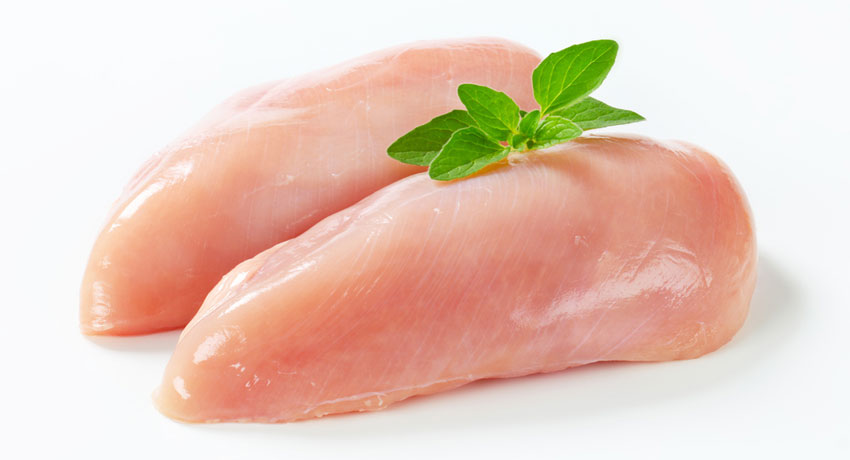Ask The Expert: Should We Still Be Eating Chicken?

Raw chicken image via shutterstock
As of October 17, 2013, the CDC reported more 330 cases of salmonella in the United States directly connected to a contamination of three Foster Farms chicken processing plants. Because the majority of cases go unreported, the number of actual cases could be exponentially higher.
The New York Times recently posedd the question, and it got us thinking about whether we should still eat chicken if so much of it is contaminated, or if we should avoid it altogether until the scare blows over. Jessica Leibler, a clinical assistant professor at Boston University’s School of Public Health’s School of Epidemiology, says avoidance is safer.
First, what is salmonella?
Salmonella is a bacterial pathogen. The usual course of symptoms involves fever, abdominal cramps, and diarrhea. It lasts anywhere from four to seven days. Most people don’t need to go to the hospital as a result, but sometimes it can be so severe that people are hospitalized for a few days.
And the most common way to become infected with salmonella is through handling uncooked chicken?
Yes. Uncooked and undercooked meat products is where you can come into contact with it and chicken is biggest offender. You find salmonella in a lot of animals—it’s a gut pathogen—so many animals can carry it. Pigs, cows, dogs, cats, they all can have it in their intestines. Most commonly, though, humans get it from chicken, eggs, or egg products.
Because chicken is the biggest offender and in light of the recent Foster Farms incidents, should we continue to eat chicken?
I get asked this question a lot, and honestly I’m becoming increasingly less comfortable with saying yes. Not that we should cut it out entirely, exactly, but cut down. It’s a systematic problem. Putting the responsibility to avoid it solely on the consumer prevents the policy changes that could eliminate it at the source from occurring. It shouldn’t be a contaminated product coming into your home. And avoiding it once it’s in your kitchen is very difficult to do. You don’t cook in a vacuum—there are kids running around and pets or whatever—you can’t always be sure that you’re not accidentally cross-contaminating. We really need to be looking at why bacteria can come into your home instead of accepting that its there and focusing on how to avoid it.
So there’s not a lot a consumer can do to avoid salmonella if its already there?
Of course there are preventative measures you can take. The main recommendation is to involve a lot of hygiene in your cooking practices. Wash your hands thoroughly after handling uncooked chicken, don’t reuse cutting boards or utensils once you’ve used them for the chicken, make sure you use everything for that one purpose alone. Also, the internal temperature of the chicken should be 160 degrees Fahrenheit when its done and ready to be eaten. Not the outside of it, the inner-most piece of the breast needs to be 160. It’s almost impossible to visually assess that so you should invest in a meat thermometer. But again, its impractical to expect consumers to be able to do this every time they cook.
How can the food industry eliminate salmonella as a threat?
It’s a policy and legislative issue. Because of the widespread use of antibiotics in US meat products as preventative measures, we get multi-drug resistant salmonella bacteria. Besides practicing strict hand hygiene in the kitchen, and double checking the internal temperature, and not reusing utensils and surfaces, there’s not a whole lot consumers can do; it has a lot more to do with larger changes higher up.
What about buying chicken that’s from “organic” farms? Does that reduce the likelihood of the presence of salmonella?
Yes and no. On the whole, companies that are producing organic products will have less opportunity for exposure to salmonella than conventional chicken. But, it is still possible for organic animals to be contaminated. There are a lot of different processes that the meat goes through from the farm to the butcher’s shop or the grocery store before you buy it. Like the contaminated Costco chickens, for example, those are packaged raw and then sent to Costco, and then unwrapped and cooked and repackaged under a different brand name. So there are still a lot of opportunities for salmonella in that process.


